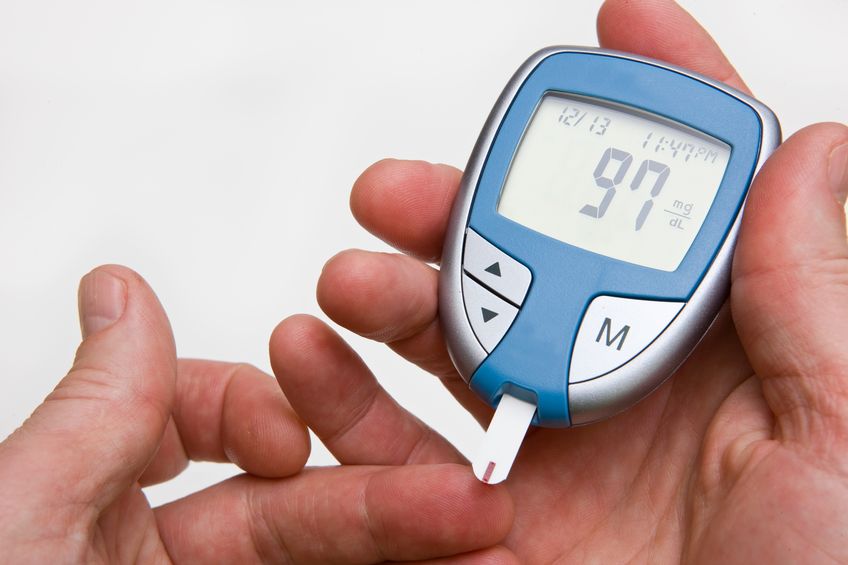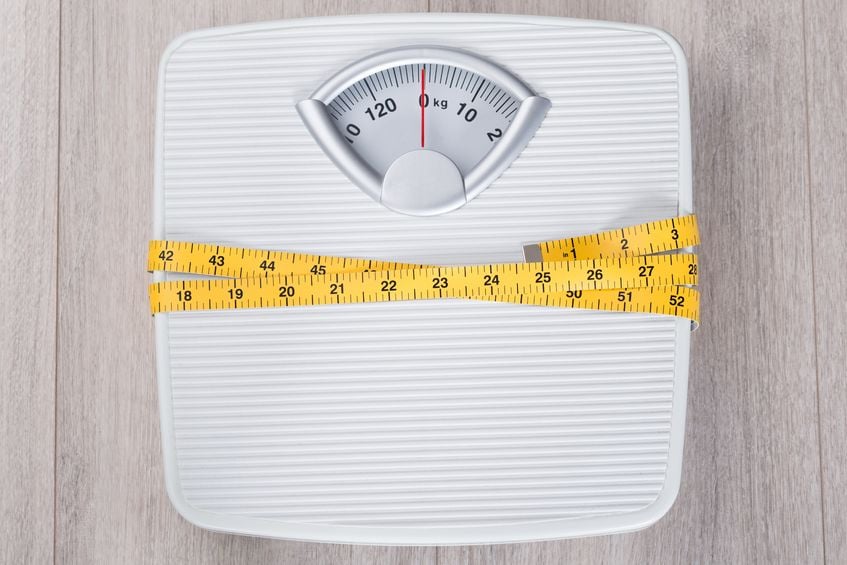 Type-2 diabetes is no longer known as “adult onset diabetes,” and with good reason. Not only are adults coming down with the disease in record numbers, it’s also showing up in teenagers – and even children. There are more than 20 million people in the U.S. with type-2 diabetes, and approximately 6 million have no idea they have it.1 But diabetes prevention isn’t only possible, it’s relatively simple if you’re willing to make the commitment.
Type-2 diabetes is no longer known as “adult onset diabetes,” and with good reason. Not only are adults coming down with the disease in record numbers, it’s also showing up in teenagers – and even children. There are more than 20 million people in the U.S. with type-2 diabetes, and approximately 6 million have no idea they have it.1 But diabetes prevention isn’t only possible, it’s relatively simple if you’re willing to make the commitment.
Type-2 Diabetes – The Basics
In order to be able to do their jobs, our cells need glucose, a type of sugar. Healthy people have the mechanisms in place so that glucose levels don’t get too high or go too low. The body converts the carbohydrates we eat into glucose, which is quickly absorbed into the bloodstream.
If blood sugar levels rise, the body alerts the pancreas to produce insulin and release it into the bloodstream. Insulin is a hormone that directs cells to absorb the excess glucose, much like a sponge. When we don’t have enough insulin, excess glucose stays in the bloodstream rather than get to the cells where it’s needed.
When the body either doesn’t make enough insulin or can’t use it properly, that leads to diabetes. In some cases, insulin resistance occurs. This is where the pancreas actually produces an over-abundance of insulin because the cells are unable to absorb it.
There are two main forms of diabetes. Type 1 develops when the immune system attacks the pancreas, rendering it unable to produce insulin. Anywhere from 5-10 percent of diabetes diagnoses are type 1, which typically develops in childhood. 2 Type 2 diabetes usually takes decades to develop, and occurs as cells throughout the body gradually stop absorbing glucose. The pancreas goes into overdrive to make more insulin until the cells that produce the hormone fail from exhaustion.
Pre-Diabetes
There are nearly 60 million adults in the U.S. who have a condition known as “pre-diabetes.” 3 This occurs when an otherwise healthy person has a high level of blood sugar. While the level is high, it’s not yet high enough to be classified as type 2 diabetes. If someone diagnosed with pre-diabetes doesn’t make substantial changes to his or her lifestyle, there is a high probability that person will eventually develop type 2 diabetes. Unfortunately, people with pre-diabetes might already be suffering damage to the kidneys, blood vessels and heart and not have any idea.
While pre-diabetes can affect anyone at any age, that doesn’t mean it will always lead to type 2 diabetes. Lifestyle changes for both children and adults can bring blood sugar levels back to the safe range – and, as a result, they can avoid developing the disease.
Diabetes Prevention Tips
Certain people have a genetic predisposition to both pre-diabetes and type 2 diabetes. However, lifestyle and behavioral choices far outweigh genetics when it comes to determining who will and will not become diabetic. Research shows that the vast majority of diabetic diagnoses in women, for example, occur due to lifestyle choices such as following an unhealthy diet, a lack of regular physical activity and smoking.4
There are several studies that show diabetes prevention is possible. In one study, researchers analyzed the effects of increased physical activity and weight loss on blood sugar levels of people with pre-diabetes. One group of participants followed a special program of a sensible diet and increased physical activity, while another group followed typical lifestyle recommendations and took a drug known as metformin, which is a drug designed to lower blood sugar levels. Another group followed typical recommendations and received a placebo.
Three years into the study, there were nearly 60 percent fewer cases of diabetes among the group following the sensible diet and increased physical activity regimen. They continued to show a reduced risk of the disease 10 years after the study concluded.5
Here’s some more information how weight control and increased physical activity can help, as well as other diabetes prevention tips.

1. Weight Control
Being overweight is the biggest risk factor when it comes to type 2 diabetes. In fact, an obese person is as much as 40 times more at risk than someone who maintains a healthy weight.6 If you’re not classified as “obese” but you’re still overweight, you could cut your risk by as much as 50 percent if you lose as little as 10 pounds.
2. Increasing Physical Activity
A lack of physical activity is another leading contributing factor to higher blood sugar levels – which leads to diabetes. The more you work your muscles, the better they are able to absorb both glucose and insulin. As a result, the cells that make insulin will be under less stress.
But you don’t necessarily have to go through a grueling workout seven days a week in order to lower your diabetes risk. According to one study, you can reduce your risk by as much as 30 percent simply by taking a brisk walk for about 30 minutes a day.7 Engaging in this type of physical activity on a regular basis provides other benefits as well, including a healthier cardiovascular system.
While it’s understandable that you might just want to melt into your couch and watch TV after a hard day of work, that’s actually one of the worst things you can do when it comes to your diabetes risk. Research indicates that for every two hours you watch television rather than engaging in physical activity, you could increase your risk of developing diabetes by as much as 20 percent.8
3. Eat Whole Grains Rather Than Carbs
There is substantial scientific evidence that people who eat a diet rich in whole grains have a lower risk of diabetes, while those who each a lot of refined carbohydrates have an increased risk.9 Researchers conducting one study analyzed the health data of more that 160,000 women over an 18-year period. The women who ate whole grains an average of two to three times a day were 30 percent less likely to be diagnosed with type 2 diabetes than those who typically didn’t eat whole grains.10
Whole grains don’t include some magic ingredient that helps you avoid diabetes. But they do contain fiber and bran, which make it harder for the digestive system to turn starches into glucose. As a result, blood sugar and insulin levels don’t rise as quickly. Your body doesn’t have to stress as much to make insulin, and that helps lower your risk.
On the other hand, foods such as donuts, white bread, white rice, certain breakfast cereals and bagels can spike blood sugar levels to unsafe numbers, which could increase the chances that diabetes will develop. One study involved women in China who ate white rice on a regular basis. According to the results, they were at a 21 percent higher risk for developing diabetes when compared to other women who avoided white rice.11 Another study showed that women who ate brown rice instead of white rice were 11 percent less likely to develop the disease.12

4. Avoid Sugary Drinks
You already know that consuming too many soft drinks can be bad for you, but you might not realize just how harmful it can be. Research shows that women who drink one or more sugary beverages a day are an astounding 83 percent more likely to develop type 2 diabetes than women who only average drinking one sugary beverage a month.13
Instead of drinking sodas, many people turn to fruit drinks, fruit juices or powdered drinks because they think those are healthier alternatives. But that might not be the case. According to one study, women who consume two or more fruit drinks a day have a 31 percent higher risk of developing diabetes than those who only average one of those types of drinks each month.14
Instead of sodas and fruit drinks, you might want to consider turning to water or coffee. Research indicates that drinking coffee could substantially help in diabetes prevention. Of course, in order to reap the potential benefits of coffee you can’t mix it with a lot of cream and sugar.15
A lot of us drink sugar-free beverages in order to help us control our weight, and as a result, also help lower our chances of developing type 2 diabetes. It’s possible, however, that doing so could actually increase those chances. Researchers have found that people who consume sugar-free drinks on a regular basis are at a higher risk of diabetes than people who don’t.16
There could be several reasons to explain those findings, however. For example, a lot of people go sugar-free because they’re either overweight or they have a family history of diabetes. A lot of studies don’t do a good job of taking these other factors into account when analyzing the relationship between diet drinks and diabetes. As a result, they make it appear that diet drinks are a direct contributing factor to the disease. There is one long-term study that involved 40,000 men that shows drinking one diet soda a day doesn’t appear to increase the risk of diabetes.17
5. Watch Out for “Bad Fats”
You might think that all types of fat are bad, but there are actually some fats that area good for you. In fact, polyunsaturated fats, typically found in seeds, nuts and certain types of vegetable oil, can actually help you avoid type 2 diabetes.18 On the other hand, trans fats – the ones you’ll find in a lot of fried foods, certain types of margarine, many baked products and others can increase your risk.19 If you have already been diagnosed with diabetes, eating omega 3 fats from fish could help lower the chances you’ll develop heart disease.
6. Slow Down on Red Meat and Processed Meat
It would be nearly impossible for most of us to immediately cut all red meat and processed meats from our diets. Imagine trying to avoid steaks, hot dogs, hamburgers and bacon for good. But you can try to gradually cut down on your red meat/processed meat intake and lower your diabetes risk.
Scientific evidence bears this out. Researchers in one study analyzed health data from nearly 450,000 people – about 30,000 of these people had been diagnosed with type 2 diabetes. According to the results, eating as little as a single, three-ounce serving of red meat increased the chances of being diagnosed with the disease by as much as 20 percent. The results regarding processes red meat such as hot dogs and bacon were even worse – people who averaged eating a hot dog or two slices of bacon each day were at a 51 percent higher risk.
But the same study showed that you can substantially lower your risk by gradually substituting protein sources such as fish, whole grains, poultry, nuts and low-fat dairy products. People who did this, according to the results, saw their chances of developing type 2 diabetes decrease by as much as 35 percent.20
Why are red meat and processed red meat so closely associated with an elevated diabetes risk? One theory holds that red meat contains a great deal of iron, which appears to negatively impact the effectiveness of insulin. In addition, iron appears to damage insulin-producing cells. In addition, the preservatives and sodium in processed red meats appear to contribute to the development of diabetes in people who are already genetically predisposed to the disease.21

7. Drink Alcohol in Moderation
There is an increasing body of scientific evidence that shows consuming alcohol in moderation may not only lower your chances of developing heart disease but also type 2 diabetes. One drink a day for women (and two drinks per day for men) could help make it easier for cells to absorb glucose.22 But moderation is vital to obtaining benefits from alcohol. If you drink it in excess on a regular basis, that could actually increase your chances of developing the disease.23
But just because alcohol can, in some cases, help improve your health, that doesn’t mean you need to start if you choose to abstain. You can obtain the same benefits from engaging in more physical activity, watching your diet and shedding excess weight.
The bottom line is that diabetes prevention is possible if you make a few relatively minor changes to your lifestyle. However, you should never do anything like this without talking to your doctor first. While he or she will probably applaud your efforts to improve your health, it’s important that you go about it the right way rather than immediately jumping headfirst into a new way of life. Talk to your doctor or a nutritionist to get some guidance.
For more health news you can use, keep reading:
Boswellia Serrata Extract – Reduce Pain with Tree Sap?
3 Detox Drink Recipes (that actually taste delicious!)
Sources:
1.Association, American. “Economic Costs Of Diabetes In The U.S. In 2007. – Pubmed – NCBI”. Ncbi.nlm.nih.gov. N.p., 2017. Web. 6 July 2017.
2.”2014 Statistics Report | Data & Statistics | Diabetes | CDC”. Cdc.gov. N.p., 2017. Web. 6 July 2017.
3.”Statistics About Diabetes”. American Diabetes Association. N.p., 2017. Web. 6 July 2017.
4.Hu FB, et al. “Diet, Lifestyle, And The Risk Of Type 2 Diabetes Mellitus In Women. – Pubmed – NCBI”. Ncbi.nlm.nih.gov. N.p., 2017. Web. 6 July 2017.
5.”10-Year Follow-Up Of Diabetes Incidence And Weight Loss In The Diabetes Prevention Program Outcomes Study”. N.p., 2017. Print.
6.Hu FB, et al. “Diet, Lifestyle, And The Risk Of Type 2 Diabetes Mellitus In Women. – Pubmed – NCBI”. Ncbi.nlm.nih.gov. N.p., 2017. Web. 6 July 2017.
7.Hu FB, et al. “Walking Compared With Vigorous Physical Activity And Risk Of Type 2 Diabetes In Women: A Prospective Study. – Pubmed – NCBI”. Ncbi.nlm.nih.gov. N.p., 2017. Web. 6 July 2017.
8. Grøntved, Anders. “Television Viewing And Risk Of Type 2 Diabetes, Cardiovascular Disease, And All-Cause Mortality”. N.p., 2017. Print.
9. AlEssa, Hala et al. “Abstract 20: Carbohydrate Quality, Measured Using Multiple Carbohydrate Quality Metrics, Is Negatively Associated With Risk Of Type 2 Diabetes In US Women”. Circ.ahajournals.org. N.p., 2017. Web. 6 July 2017.
10.de Munter, Jeroen S. L et al. “Whole Grain, Bran, And Germ Intake And Risk Of Type 2 Diabetes: A Prospective Cohort Study And Systematic Review”. N.p., 2017. Print.
11.Villegas, Raquel et al. “Prospective Study Of Dietary Carbohydrates, Glycemic Index, Glycemic Load, And Incidence Of Type 2 Diabetes Mellitus In Middle-Aged Chinese Women”. N.p., 2017. Print.
12.Sun, Qi. “White Rice, Brown Rice, And Risk Of Type 2 Diabetes In US Men And Women”. N.p., 2017. Print.
13. Schulze MB, et al. “Sugar-Sweetened Beverages, Weight Gain, And Incidence Of Type 2 Diabetes In Young And Middle-Aged Women. – Pubmed – NCBI”. Ncbi.nlm.nih.gov. N.p., 2017. Web. 6 July 2017.
14.Palmer, Julie R. “Sugar-Sweetened Beverages And Incidence Of Type 2 Diabetes Mellitus In African American Women”. N.p., 2017. Print.
15. van Dam RM, et al. “Coffee, Caffeine, And Risk Of Type 2 Diabetes: A Prospective Cohort Study In Younger And Middle-Aged U.S. Women. – Pubmed – NCBI”. Ncbi.nlm.nih.gov. N.p., 2017. Web. 6 July 2017.
16. Dhingra R, et al. “Soft Drink Consumption And Risk Of Developing Cardiometabolic Risk Factors And The Metabolic Syndrome In Middle-Aged Adults In The Community. – Pubmed – NCBI”. Ncbi.nlm.nih.gov. N.p., 2017. Web. 6 July 2017.
17.de Koning, L. et al. “Sugar-Sweetened And Artificially Sweetened Beverage Consumption And Risk Of Type 2 Diabetes In Men”. N.p., 2017. Print.
18.RISERUS, U, W WILLETT, and F HU. “Dietary Fats And Prevention Of Type 2 Diabetes”. N.p., 2017. Print.
19. Mozaffarian D, et al. “Trans Fatty Acids And Cardiovascular Disease. – Pubmed – NCBI”. Ncbi.nlm.nih.gov. N.p., 2017. Web. 6 July 2017.
20. Pan, A. et al. “Red Meat Consumption And Risk Of Type 2 Diabetes: 3 Cohorts Of US Adults And An Updated Meta-Analysis”. N.p., 2017. Print.
21.Qi, L. et al. “Genetic Predisposition, Western Dietary Pattern, And The Risk Of Type 2 Diabetes In Men”. N.p., 2017. Print.
22.Joosten MM, et al. “Combined Effect Of Alcohol Consumption And Lifestyle Behaviors On Risk Of Type 2 Diabetes. – Pubmed – NCBI”. Ncbi.nlm.nih.gov. N.p., 2017. Web. 6 July 2017.
23.Baliunas, D. O. et al. “Alcohol As A Risk Factor For Type 2 Diabetes: A Systematic Review And Meta-Analysis”. N.p., 2017. Print.
This information is invaluable. When can I find out
more? 0mniartist asmr
I just could not depart your web site before suggesting that I extremely enjoyed the usual info a person provide in your
guests? Is going to be again often in order to inspect new posts
asmr 0mniartist
Hi I am so glad I found your site, I really found you by mistake, while I
was searching on Bing for something else, Nonetheless I am
here now and would just like to say kudos for a tremendous post and a all round exciting blog (I also love
the theme/design), I don’t have time to read through it all at the moment but I
have saved it and also included your RSS feeds, so when I have time I will be
back to read much more, Please do keep up the great job.
asmr 0mniartist
Pretty great post. I just stumbled upon your weblog and wanted to
say that I have really loved surfing around your blog posts.
After all I will be subscribing on your rss feed and I’m
hoping you write once more soon! asmr 0mniartist